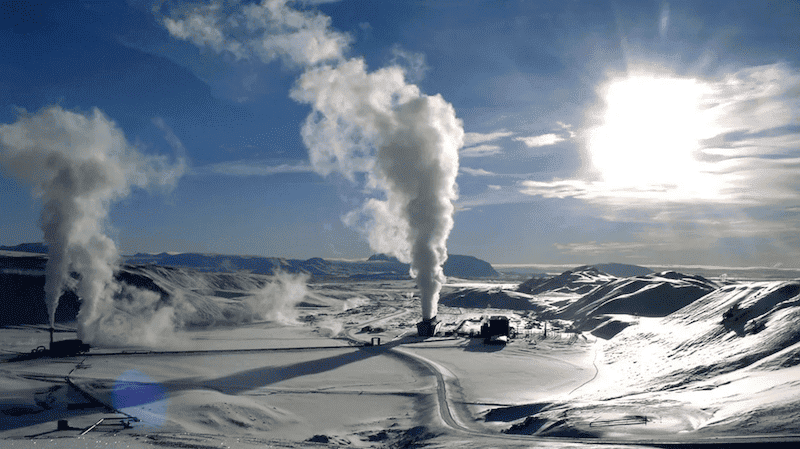Harnessing the Natural Power of the Earth: Geothermal Energy for Sustainable Agriculture in Greenland and Iceland
Geothermal energy, a renewable source of power derived from the Earth's heat, is gaining recognition for its potential to revolutionize agriculture in regions with challenging climates. Greenland and Iceland, two countries known for their extreme cold and harsh weather conditions, have been exploring the use of geothermal energy to address food security in the Arctic. In this blog, we travel to Greenland and Iceland to explore the potential of geothermal energy to foster the development of sustainable agriculture in a region that grows very little of its own food.
Exploring the Potential of Geothermal Energy for Sustainable Agriculture in Greenland and Iceland
Greenland and Iceland possess abundant geothermal resources due to their geological settings. Geothermal energy can be harnessed through various methods such as geothermal heat pumps, which utilize the constant temperature of the Earth to provide heating and cooling for agricultural facilities, such as geothermal greenhouses. In addition, geothermal power plants can generate electricity by tapping into the underground reservoirs of hot water and steam. These energy sources have the potential to transform agricultural practices in these regions, enabling year-round production and reducing dependence on imported food thereby improving food security.
Geothermal Greenhouses: A Revolution in Food Production in the Arctic
Geothermal greenhouses are at the forefront of the agricultural revolution in Greenland and Iceland. These structures utilize geothermal heat to maintain a suitable climate for plant growth, regardless of the external weather conditions. By harnessing the Earth's natural energy, these greenhouses can grow crops year-round, provide optimal conditions for crop cultivation, and protect plants from frost and extreme temperatures. This innovation allows farmers to grow a wide variety of crops throughout the year, including leafy greens, tomatoes and peppers.
The Environmental Benefits of Geothermal-Powered Agriculture
Geothermal-powered agriculture offers significant environmental advantages over traditional farming methods. By utilizing renewable energy, greenhouse gas emissions associated with conventional energy sources are significantly reduced. Geothermal energy production produces minimal emissions, making it an environmentally friendly alternative for powering agricultural operations. Moreover, the use of geothermal heat pumps reduces the reliance on fossil fuels for heating and cooling, further contributing to the reduction of greenhouse gas emissions. By adopting geothermal energy, Greenland and Iceland can demonstrate their commitment to sustainable agriculture and mitigating climate change.
Geothermal Energy and Its Impact on Crop Yield
The utilization of geothermal energy can have a positive impact on crop yield in Greenland and Iceland. Geothermal heat provides a consistent and reliable source of warmth for plants, ensuring optimal growing conditions. This stability promotes faster growth, higher yields, and better-quality crops. Additionally, geothermal energy can be used to heat nutrient solutions in crop circle farm systems, improving nutrient uptake and enhancing plant health. The controlled environment created by geothermal greenhouses also reduces the risk of pests and diseases, further contributing to increased crop productivity.
Overcoming Challenges in Harnessing Geothermal Energy from the Earth
Although geothermal energy holds great promise for sustainable agriculture in Greenland and Iceland, there are challenges to overcome. The initial investment required to establish geothermal infrastructure can be substantial, requiring financial support and collaboration between government bodies and private enterprises. Also, the geological conditions of each region must be carefully assessed to ensure the feasibility of geothermal energy extraction. However, with proper planning and support, these challenges can be addressed, paving the way for widespread adoption of geothermal-powered agriculture.
Case Studies: Successful Implementations of Geothermal-Powered Agriculture in Greenland and Iceland
Several successful case studies highlight the feasibility and benefits of geothermal-powered agriculture in Greenland and Iceland. For instance, in Hveragerði, Iceland, the Geothermal Park utilizes geothermal heat to grow a variety of fruits and vegetables, including tomatoes, cucumbers, and strawberries. This project has not only provided fresh, locally grown produce but has also become a popular tourist attraction, showcasing the potential of geothermal energy in agriculture. In Greenland, the Narsaq Geothermal Greenhouse project has successfully demonstrated the viability of year-round vegetable production in an otherwise challenging environment. These case studies serve as inspiration and motivation for further development of geothermal-powered agriculture in these regions.
The Future of Geothermal Energy in Agriculture
The future of geothermal energy in agriculture looks promising, with ongoing research and development focusing on optimizing its potential. Advancements in geothermal technology, coupled with increasing awareness of the importance of sustainable food production, are driving the adoption of geothermal energy in agriculture. As the demand for locally grown, sustainable food continues to rise, geothermal-powered agriculture can play a crucial role in meeting these needs, even in the most challenging climates. By harnessing the natural power of the Earth, Greenland and Iceland are embracing a sustainable and resilient future for agriculture.
Geothermal energy has the potential to transform agriculture in Greenland and Iceland, enabling year-round production, reducing imports, and promoting sustainable practices. Geothermal greenhouses offer a revolutionary solution, allowing controlled agriculture farmers to grow a wide variety of crops in challenging climates. The environmental benefits of geothermal-powered agriculture, including reduced emissions and enhanced crop yields, further highlight its significance. Although challenges exist, successful case studies demonstrate the feasibility and potential of geothermal energy in agriculture. With ongoing research and development, geothermal-powered agriculture is poised to shape the future of food production in Greenland and Iceland, ensuring a sustainable and food secure agricultural sector for generations to come.




.png)
.png)
.png)

.png)